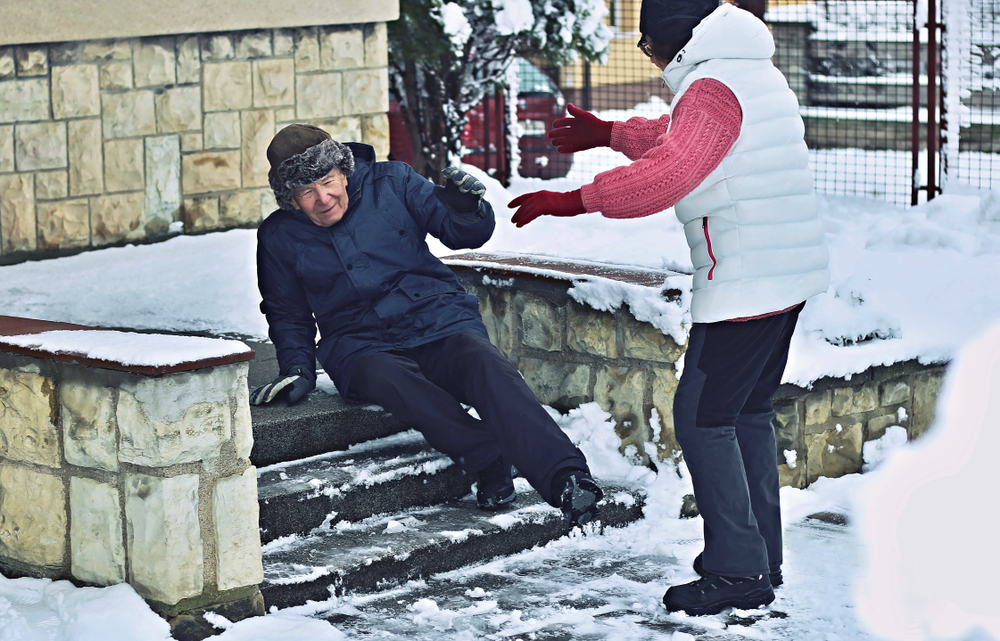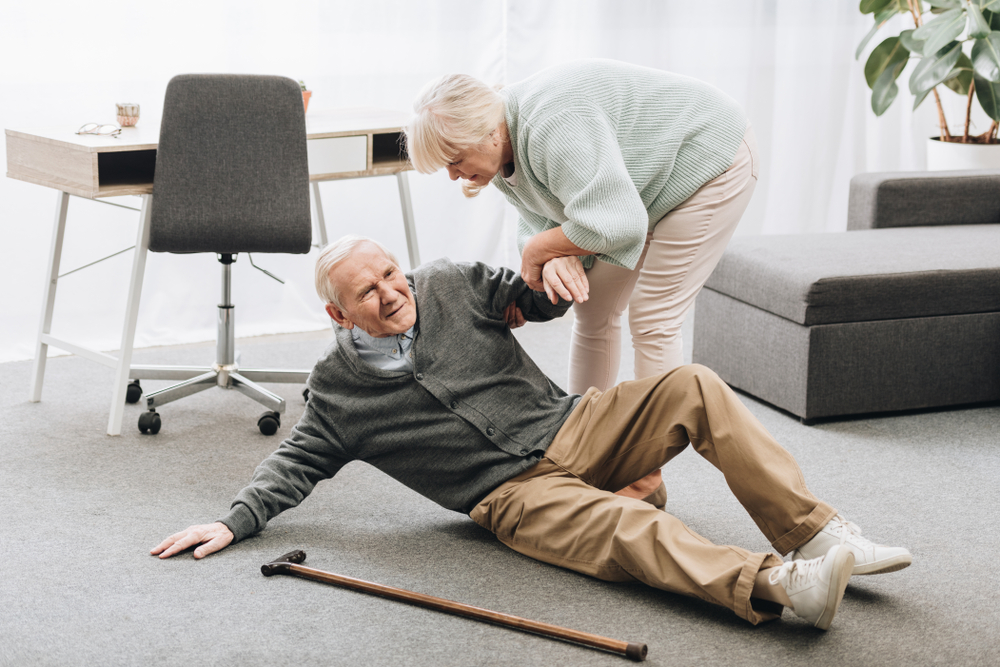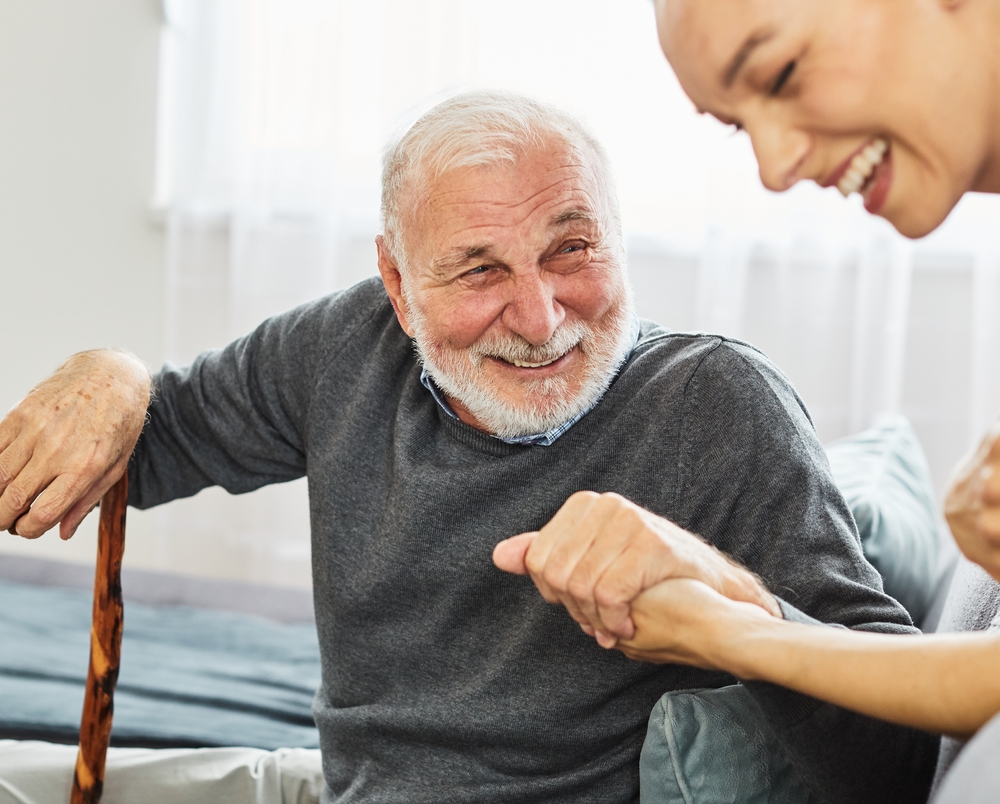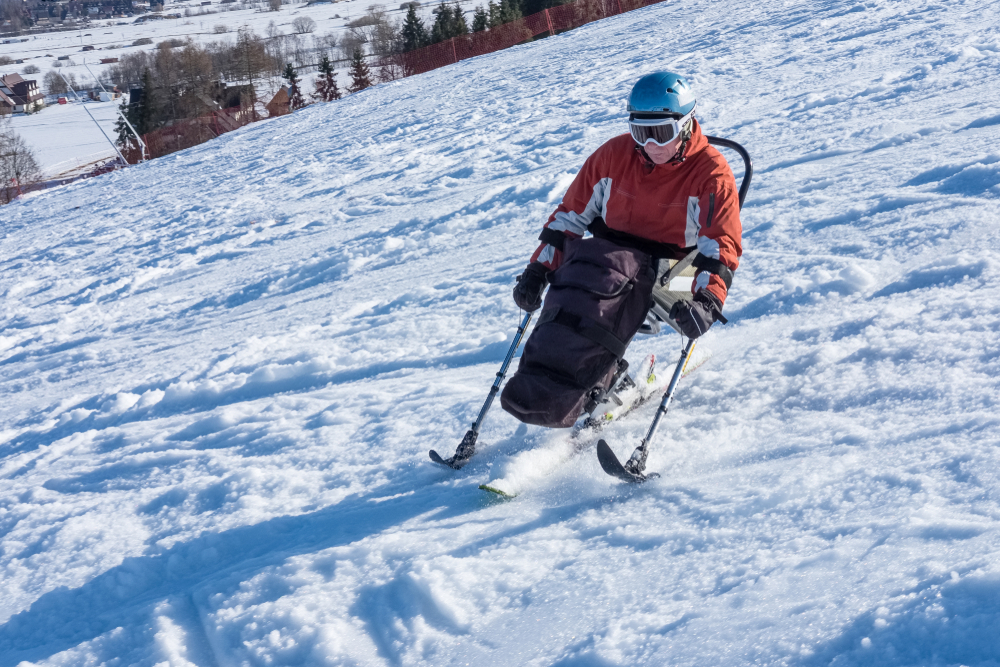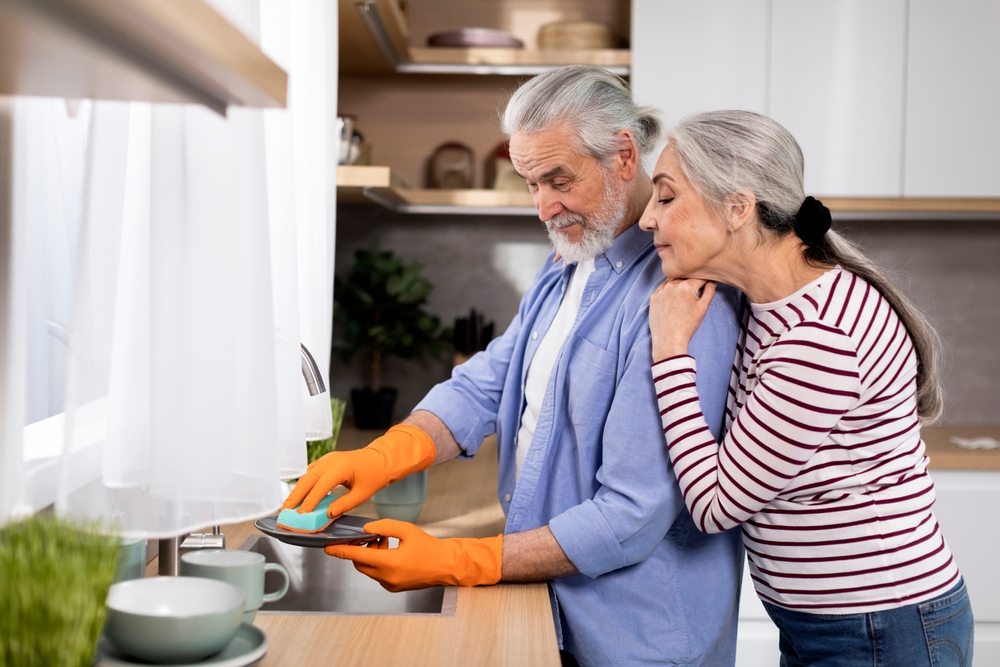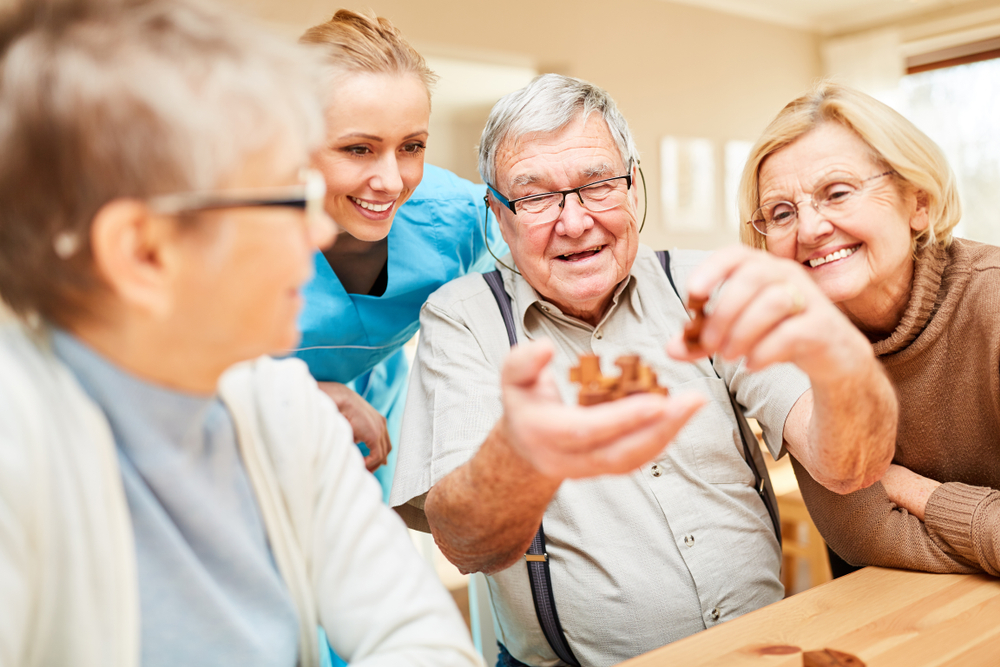Make an Appointment
Falls remain the leading cause of injury-related hospitalisations among Australians aged 65 and over. In 2022–23, there were 238 055 fall-related admissions nationwide (an age-standardised rate of 758.2 per 100 000), including over 70 000 occurring at home . Beyond physical injuries: fractures, head trauma and loss of independence, the resulting fear of falling can erode confidence and social participation.
Preventing falls requires addressing intrinsic factors (muscle strength, balance, vision, cognition), extrinsic hazards (home environment, footwear, lighting) and behavioural patterns (rushing, multitasking). Occupational therapists specialise in integrating these elements into a person-centred prevention program, helping older adults stay safe, active and in their own homes.

How Can Occupational Therapy Help with Fall Prevention?
Occupational therapy employs a multi-pronged, evidence-based approach:
Comprehensive Home Safety Assessment
- OTs conduct structured walkthroughs using standardised tools (e.g., Home Falls and Accidents Screening Tool) to identify hazards: poor lighting, loose rugs, slippery floors, awkward step heights. Detailed reports specify optimal grab-rail height (85–95 cm off floor), non-slip mat selection and AS 1428-compliant modifications .
-
Task Analysis & Adaptive Techniques
- Daily tasks (dressing, bathing, cooking) are broken into safer, energy-conserving steps. For example, teaching “sit-pivot-stand” transfers, using a bench-style shower chair, or long-handled reachers to avoid over-reaching and sudden weight shifts.
-
Strength & Balance Conditioning
- Integrating exercises: sit-to-stand, tandem walking, mini-squats, into everyday routines builds lower-limb strength and proprioception. OTs progress clients from seated marches to single-leg stands, re-evaluating weekly to match gains and maintain challenge.
-
Assistive Technology Prescription
- Devices range from simple (sock-aids, reachers, non-slip bath stickers) to complex (personal alarm pendants, electric sit-to-stand chairs). OTs match devices to individual needs, provide hands-on training and arrange regular maintenance checks.
-
Education & Behaviour Change
- Through motivational interviewing, OTs help clients set SMART goals (e.g., “Stand from chair without hands within four weeks”), teach the “hazard scan” habit, pausing to survey surroundings before standing, and involve caregivers in safe transfer techniques and emergency response planning.
-
By weaving these elements together, occupational therapy transforms fall-risk reduction into a meaningful and sustainable lifestyle change.
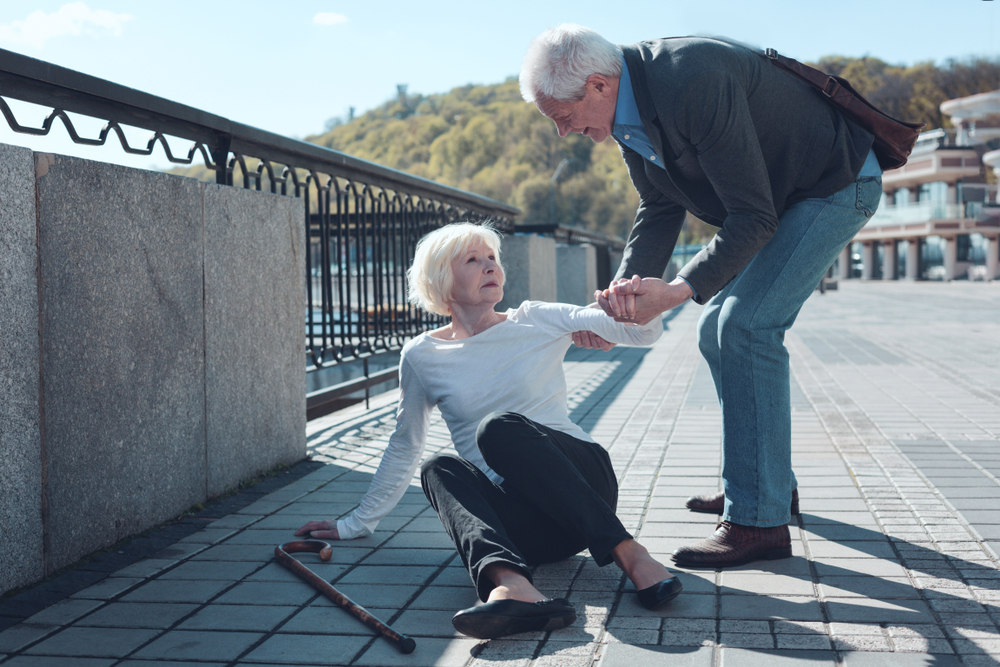
What Are the 5 P’s of Falls Prevention?
The 5 P’s framework ensures a systematic approach across all risk domains :
Person
- Assessment: Standardised tests: Timed Up & Go (TUG) for mobility, Berg Balance Scale for balance, vision screens and cognitive tools (MoCA).
- Intervention: Nutrition review (Vitamin D, calcium), referral for cataract surgery or diabetes management as needed.
Prescription
- Medication Audit: Identify sedatives, antihypertensives or anticholinergics that increase dizziness or drowsiness.
- Collaboration: OTs liaise with GPs and pharmacists to adjust dosing schedules, switch to lower-risk alternatives and monitor side effects via medication diaries.
Physiotherapy/Exercise
- Program Design: Co-delivery with physiotherapists of targeted strength and balance regimes: heel raises, step-ups, dynamic weight-shifting.
- Functional Integration: Embedding exercises into daily tasks (e.g., calf-raises while waiting for kettle to boil).
Psychosocial
- Fear of Falling: Graded exposure, starting with low-risk tasks (walking in home) and gradually introducing more challenging activities (outdoor walking groups).
- Support Networks: Facilitation of peer groups (e.g., Steady As You Go) and mental health referrals for anxiety management.
Place
- Environmental Modifications: Improve lighting, install handrails, remove trip hazards, ensure 850 mm minimum doorway widths.
- Coordination: OTs produce floor-plan schematics for building services or grants via My Aged Care.
This interconnected method leaves no gap in your falls prevention strategy.
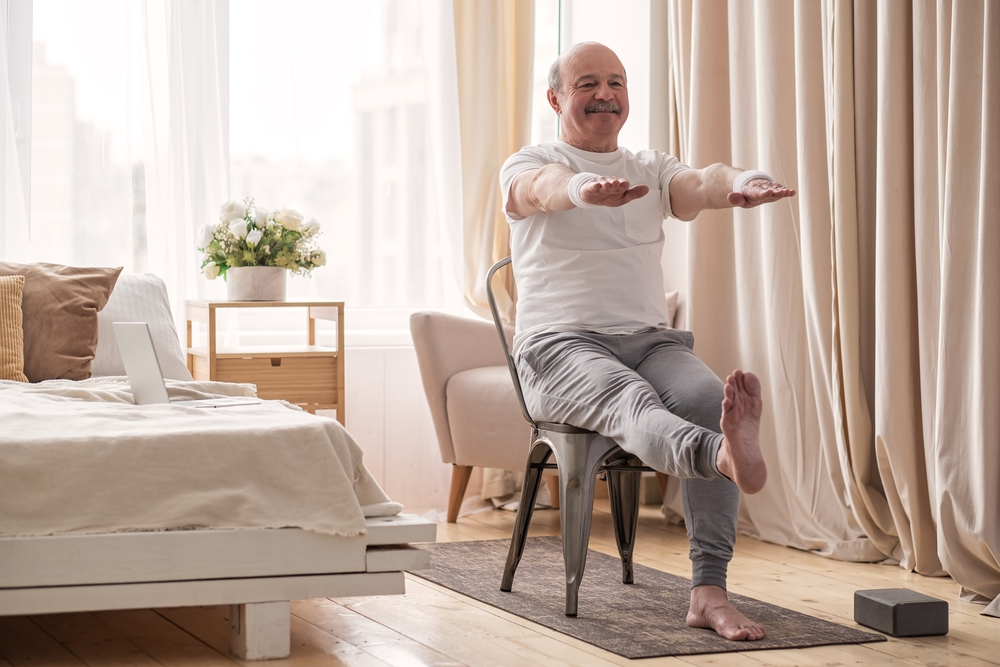
What Is the 6-Pack Falls Prevention Program?
The 6-Pack, endorsed by the Australian Commission on Safety and Quality in Health Care, weaves six core elements into routine care :
Medication Review
- In-Depth Audit: Pharmacist-led reconciliation of all prescription, over-the-counter and complementary medicines. OTs monitor for anticholinergic load and sedative effects.
- Action Plan: Adjust timing (e.g., shift evening doses to post-supper), taper dosages or switch to safer alternatives. Clients maintain a symptom diary to track dizziness or confusion.
Vision Screening
- Contrast & Depth Perception: Coordinate specialised tests beyond standard acuity screens.
- Environmental Adjustments: Apply high-contrast tape on stair trims, install anti-glare blinds and position frequently used items at eye level to reduce stooping.
Home Modification
- Safety Zones: Define high-risk areas (entrances, bathrooms) and implement targeted upgrades, flat-entry shower recesses, handrails extending 300 mm beyond steps.
- Smart-Home Tech: Motion-sensor lighting, voice-activated emergency calls and automated fall-detection pendants linked to monitoring services.
Exercise & Balance
- Dual-Task Training: Pair balance challenges (e.g., standing on foam) with cognitive tasks (naming categories) to simulate real-life demands.
- Group vs Home Programs: Triage clients to group sessions for social motivation or bespoke home plans for frailer individuals, ensuring a minimum of 50 minutes’ activity per week.
Footwear Advice
- Foot Health Assessment: Podiatrists screen for deformities; custom orthoses correct gait asymmetries.
- Footwear Trials: Compare brands for ideal heel height, sole rigidity and tread pattern, logging stability and comfort scores.
Post-Fall Review
- Root-Cause Analysis: Within seven days of a fall, OTs conduct a “Post-Fall Huddle” with client, family and care team to analyse context, time, location, activity, and update the prevention plan.
- Outcome Tracking: Falls logged in a central register, with quarterly trend reviews to measure program impact and adapt interventions.
Physio Inq delivers these six pillars through integrated Occupational Therapy and Exercise Physiology services for seamless, high-impact care.
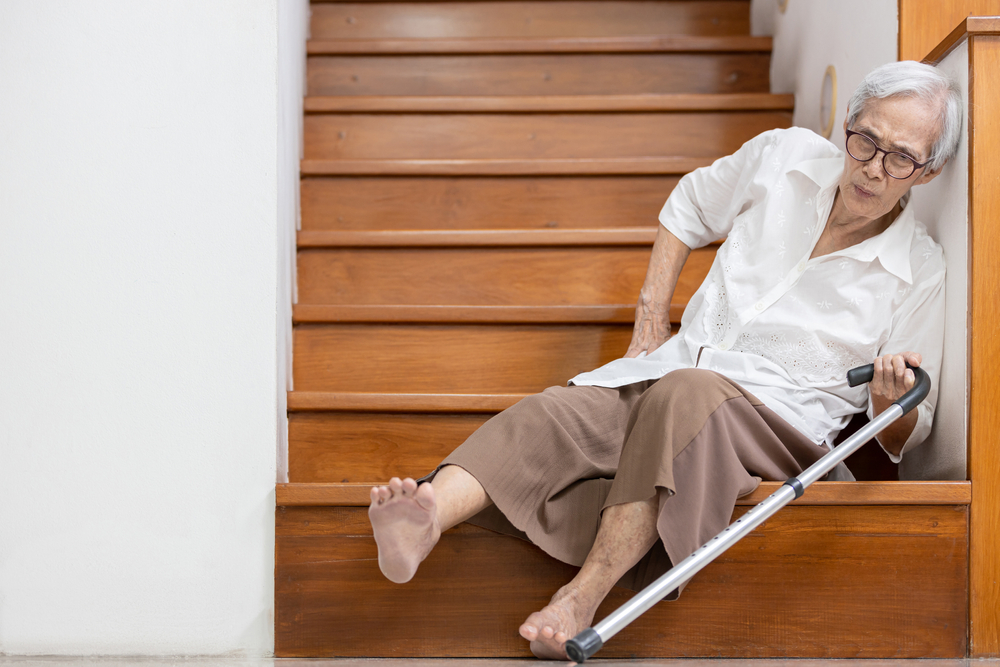
What Are the 5 B’s of Falls Prevention?
The 5 B’s mnemonic embeds prevention into everyday life with rich, actionable detail:
Balance
- Drills: Single-leg stands (3×30 s per side), tandem walking along a taped line, “clock-reach” exercises: standing on one foot and reaching in each clock direction.
- Progression: Close eyes or stand on foam pads to increase challenge; integrate head turns during balance holds to simulate multi-tasking.
Body Mechanics
- Biomechanical Training: OTs use video feedback to teach correct hip-hinge patterns, spinal alignment cues and ergonomic postures for sitting, standing and bending.
- Ergonomic Equipment: Recommend height-adjustable stools for kitchen tasks, sit-stand workstations and lever-style handles to reduce twisting.
Boots/Shoes
- Selection Criteria: Low heel (<2 cm), firm heel counter, non-slip tread and adjustable fastenings for foot shape changes.
- Maintenance Routine: Inspect soles and fastenings monthly; replace when tread depth <2 mm or support diminishes.
Bathroom Safety
- Grab Rails: Horizontal rails at 85–95 cm beside toilet and entry; vertical rails near taps for added support.
- Seating Solutions: Height-adjustable shower chairs with backrests; non-slip bath mats rated R10 or higher.
- Dry-Floor Protocol: OTs advise immediate squeegeeing of wet surfaces post-shower and use of moisture alarms if needed.
Be Aware
- Environmental Scans: Clients learn to perform micro-checks, scanning for clutter, assessing lighting, each transition from sitting to standing.
- Tech Aids: Smartphone apps or wearable buzzers prompt hazard scans; motion-sensor night-lights activate at key movement times.
Combining these five daily cues with the structured 6-Pack delivers both macro and micro level prevention for sustained safety and confidence.
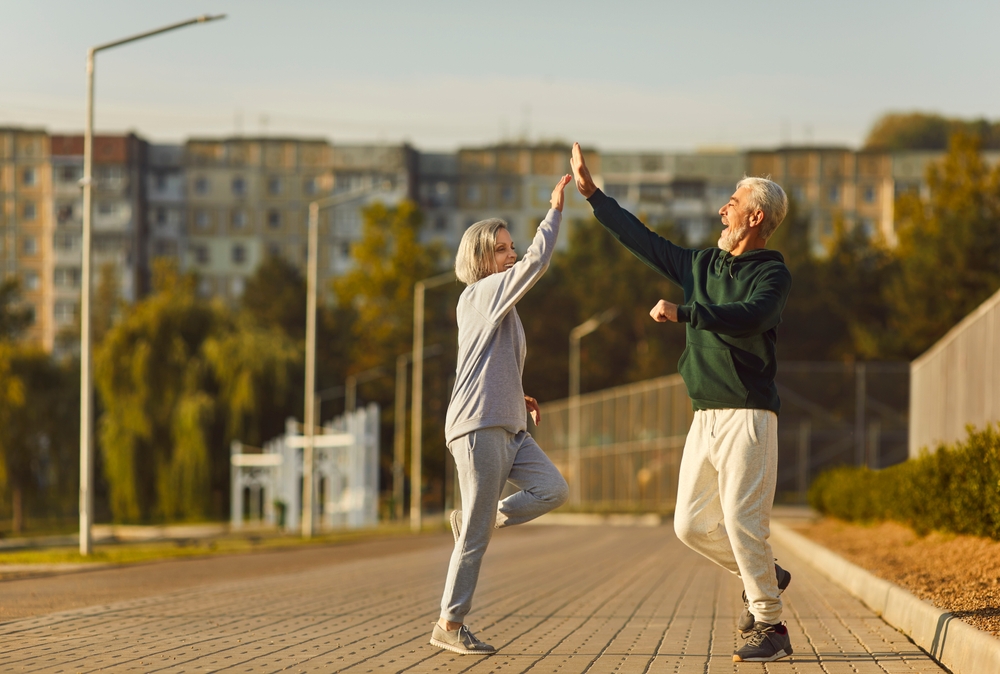
Frequently Asked Questions (FAQ)
1. Do I need a GP referral for OT falls prevention?
No:. Many private health insurers and My Aged Care packages subsidise in-home OT visits. You can self-refer to Physio Inq directly.
2. How often should I update my home safety assessment?
At least annually, or after any significant change in mobility, vision, medication or living arrangements, to address new hazards.
3. Can these programs really reduce my fall risk?
Yes. Studies show multi-factorial interventions: combining home mods, exercise and education, can lower falls by up to 30% in community-dwelling older adults.
4. What if I can’t afford major modifications?
Begin with low-cost solutions: declutter walkways, install plug-in night-lights and use non-slip mats. Larger works may be funded via My Aged Care grants or council programs.
5. Which part of the 6-Pack should I prioritise?
An OT assessment will identify your highest-impact areas, whether medication, vision, home environment, exercise, footwear or post-fall review, and tailor the plan accordingly.
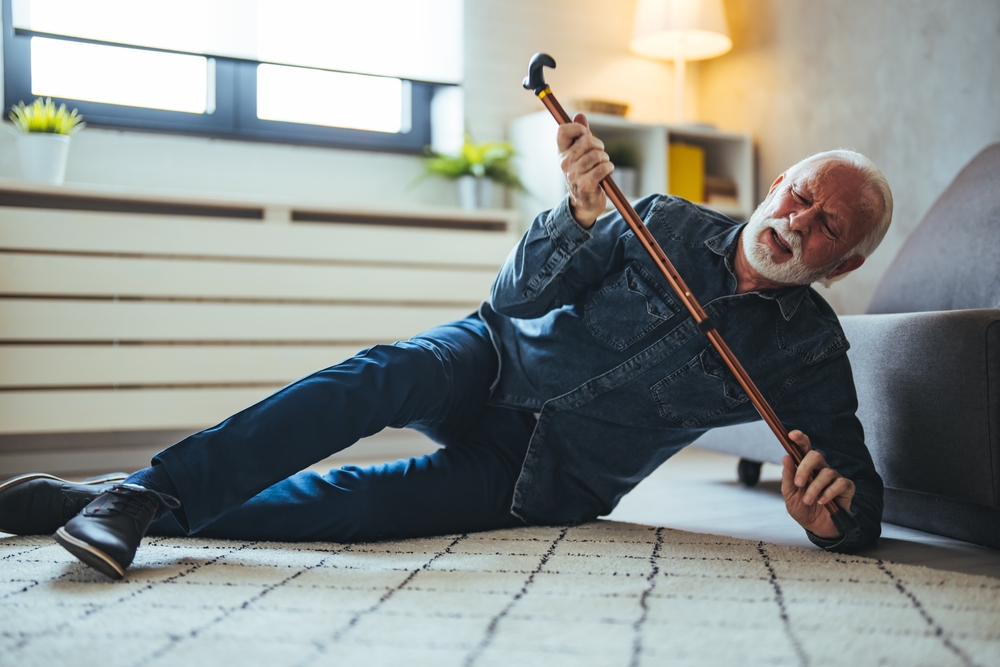
Falls prevention is an ongoing commitment that preserves independence, confidence and quality of life. An Occupational Therapy-driven program: blending home modifications, task adaptation, strength and balance training and education, offers the most complete safeguard against falls.
Next Steps:
- Book your Home Safety Assessment with Physio Inq’s Occupational Therapists, available in-home, in-clinic or online.
- Enrol in our Balance & Mobility Classes, co-delivered by our Exercise Physiologists.
- Discuss My Aged Care Funding with your GP to access subsidised allied health visits.
Call 1300 731 733 or book online to schedule your personalised falls prevention plan—and step confidently into your best years ahead.
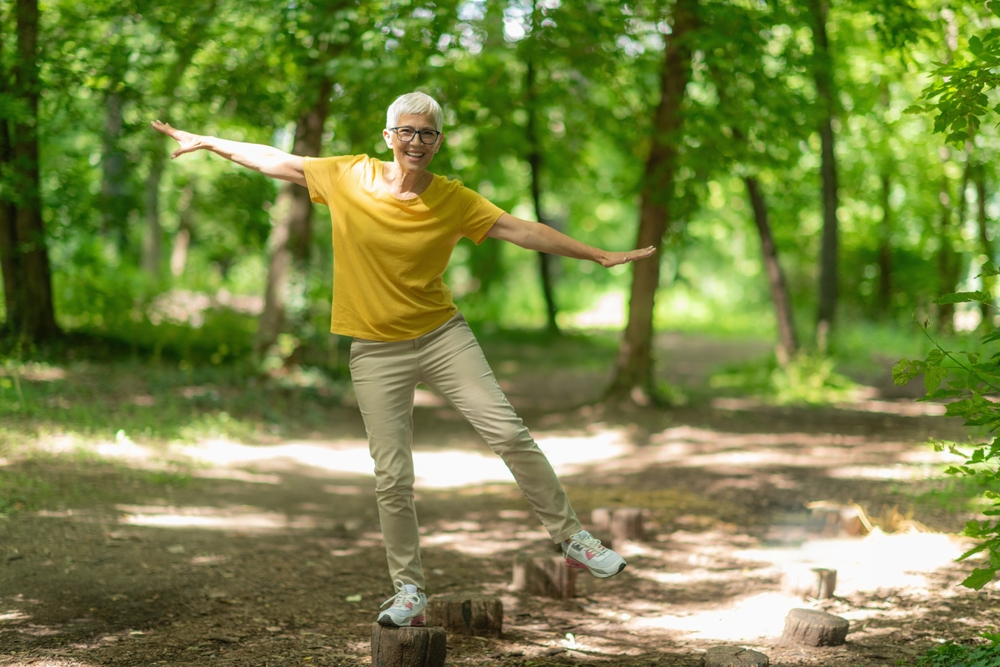
Date Published: Monday, May 26, 2025
Locate a Aged Care Occupational Therapy
Service Near me
Get the experience & convinence you deserve to support your or a loved one's allied health needs.
Our Aged Care Occupational Therapy team are currently serving & taking appointments in the following states and regions in Australia:
Need to get into direct contact with ur Client Services team? We're all ears. Call our team directly on 1300 731 733
